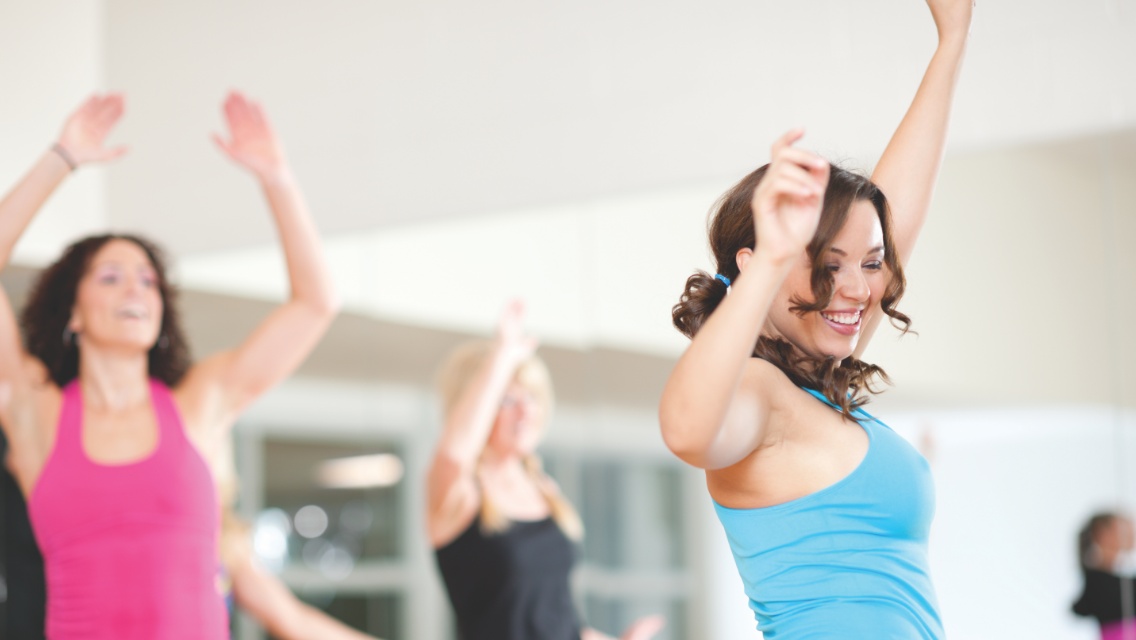You glide out of your group fitness class exhausted yet elated. Something magical just happened in that sweaty studio — something beyond the endorphin hit of a good workout. The experience felt like a celebration, with music and movement elevating the collective energy of every person in the room.
Numerous studies over the past 20 years have validated the power of music to enhance exercise enjoyment and improve athletic performance. Music motivates us and distracts us from discomfort and fatigue. And while a favorite song can boost your mood or pump you up psychologically, it’s the rhythm and tempo of music that gets you into an embodied experience of movement.
“We are rhythm-based creatures from the moment we’re born,” says Abrea Wooten, national education manager for Studio classes with Life Time. “The rhythms of our heartbeat and our breath move us. We are rhythm on the inside.”
The effect of rhythm and tempo may be amplified in group environments. A recent study out of McMaster University in Ontario, Canada, found that “higher-groove” music — groove defined as the extent to which a piece of music makes people want to move — indeed induced higher-energy movement among study participants. Further, the researchers also found that social cues (participants were either blindfolded or able to see those around them) enhanced interpersonal synchronization of movement.
A powerful group fitness experience, then, may not be so much magic as the skillful use of music to amplify the actions of the workout, to tap into our innate impulse to move in rhythm, and to help us connect with each other.
Let the Music Move You
Music played in group fitness classes typically drives a beat intended to bring you to a specific heart rate zone. “The music tempo we use in classes is usually 120–140 beats per minute (BPM),” Wooten explains. “So, your body and your heart and your breath all start matching the rhythm of the music.”
But it’s more than just a tactic to get your heart rate up. “Music gets us out of our thinking brains and just helps us feel. Music has the power to bring out joy or release anger and let go of stress,” says Wooten.
Further, by bringing participants into synchrony — via choreography and music — group fitness classes may also support social connections among participants. A host of research has examined the role of “motor-sensory interpersonal synchrony” (such as groups of people marching or dancing in unison) in supporting feelings of affiliation and closeness as well as pro-social behavior.
“To look across the room and see someone else working right with you, and to know they’re finding their joy and giving you the freedom to find yours as well — I think that’s where music makes the biggest impact in classes,” says Wooten.
“I guess you could say it’s almost like a tribal experience. The music comes on, and you’re moving in rhythm, getting through great moments and hard moments together. You may never have crossed paths with these people anywhere else, but now you’re great friends and you keep each other accountable.”
For music to motivate, start your 90 day Life Time member trial at Pandora.com.

